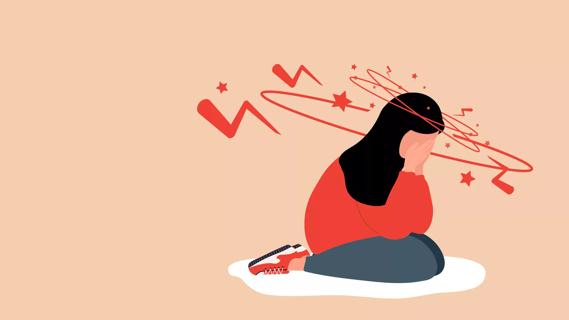Nursemaid’s elbow commonly occurs in children

Toddlers might squeal with delight when a playful family member picks them up by the wrists and swings them around, or when you pull them up by their hands to help them jump over a puddle.
Advertisement
Cleveland Clinic is a non-profit academic medical center. Advertising on our site helps support our mission. We do not endorse non-Cleveland Clinic products or services. Policy
But be careful: Lifting or grabbing a child by the arms can result in a common injury called “nursemaid’s elbow,” also known as “pulled elbow.”
It occurs when a bone in a child’s lower arm becomes partially dislocated at the elbow joint, causing sudden pain around the elbow.
“It’s a benign problem, but it is painful for the child,” says pediatric orthopedic surgeon Ryan Goodwin, MD. “The child might cry or hold their elbow because it hurts.”
Nursemaid’s elbow tends to happen most often to kids between the ages of two to five years old, whose bones and ligaments are still immature and developing.
The good news is, there’s a simple maneuver that can get the elbow back in place. But Dr. Goodwin stresses that you shouldn’t try it at home unless you’re totally confident that your child’s pain is truly caused by nursemaid’s elbow.
The most obvious sign is that the pain starts after the child has been pulled or lifted by the arms. Nursemaid’s elbow is not usually caused by a fall, so if your child complains of elbow pain after falling, seek medical attention – it may be something more serious, like a fracture or broken bone.
You also likely won’t see any visual signs of an injury, like swelling or a deformity. These, too, warrant more immediate medical attention.
Advertisement
“If there’s any question at all whether it’s nursemaid’s elbow or not, seek medical care and get an X-ray for the child,” Dr. Goodwin advises.
If you’re certain that your child’s pain was caused by a pulled elbow, try this maneuver that might be able to stop the pain:
If your child is in too much pain to tolerate this, or if it does not work, it’s time to see a doctor or visit the emergency room.
But, if that maneuver does relieve the pain, then your child should be able to go about their day without further pain or complications.
“The challenge becomes, once it happens to a child, it’s likely to happen again,” Dr. Goodwin says. “But kids will usually grow out of it by age five or six.” The important thing to keep in mind is to be as gentle as possible when lifting your child by the wrists or hands. And no matter how much fun they’re having, keep the lifting and swinging to a minimum – repetition only increases the chances of nursemaid’s elbow taking place.
Advertisement
Learn more about our editorial process.
Advertisement

Bleeding is a risk and warrants taking care, but the reward of this lifesaving medication is great

Severe and debilitating headaches can affect the quality of your child’s life

With repeat injections over time, you may be able to slow the development of new wrinkles

Although it can be alarming, it’s normal to experience blood clots during menstruation

Stretch before heading outside, keep proper form and avoid jerking or twisting to throw snow

Type 2 diabetes isn’t inevitable with these dietary changes

Applying a hot or cold compress can help with pain